Out Of Eden Walk
This week we looked at the website that explores the history and stories of the ancestors. “Paul Salopek’s 24,000-mile odyssey is a decade-long experiment in slow journalism. Moving at the beat of his footsteps, Paul is walking the pathways of the first humans who migrated out of Africa in the Stone Age and made the Earth ours. Along the way he is covering the major stories of our time—from climate change to technological innovation, from mass migration to cultural survival—by giving voice to the people who inhabit them every day. His words, as well as his photographs, video, and audio, create a global record of human life at the start of a new millennium as told by villagers, nomads, traders, farmers, soldiers, and artists who rarely make the news. In this way, if we choose to slow down and observe carefully, we also can rediscover our world.”
The first point I looked at was the Green Ark. The Green Ark, known as the ark of life. Almost 700 species of animals, including 154 mammals, 419 birds, 21 amphibians, 56 reptiles, 49 fish, and 1,690 different insects find refuge in the mountain’s steep folds. Humans that hike on the Green Ark can see what Earth once looked like. Walking through and seeing all the wildlife and how free they are in the Green Ark.

The Second point that I looked at was Walking Alongside The Daring and Creative. The first thing said in the article is that “None of us walk the Earth Alone”. Going around different places around the world, there are always people there walking with you and experiencing the same things as you. Seeing both sides of what you see, especially when there are locals around that area, they can inform you on the past of the area. This can educate you more on the places you visit.

The final point that I viewed was Milestone 32: Dry Well. “Every hundred miles Paul Salopek pauses to record the landscape and a person he meets, assembling a global snapshot of humankind.” Finding new places around the world and can use pictures to show more about the place than words can express it. Showing the journey can help show others how other parts of the world is different or similar than your area.

Out of Eden Walk
This week we followed the story of a storyteller from 2013 when he retraced the global migration of ancestors on foot called the “Out of Eden Walk”.
“Paul Salopek’s 24,000-mile odyssey is a decade-long experiment in slow journalism. Moving at the beat of his footsteps, Paul is walking the pathways of the first humans who migrated out of Africa in the Stone Age and made the Earth ours. Along the way he is covering the major stories of our time—from climate change to technological innovation, from mass migration to cultural survival—by giving voice to the people who inhabit them every day. His words, as well as his photographs, video, and audio, create a global record of human life at the start of a new millennium as told by villagers, nomads, traders, farmers, soldiers, and artists who rarely make the news. In this way, if we choose to slow down and observe carefully, we also can rediscover our world.”
The first point that I explored on the virtual walk is NABLUS, WEST BANK.
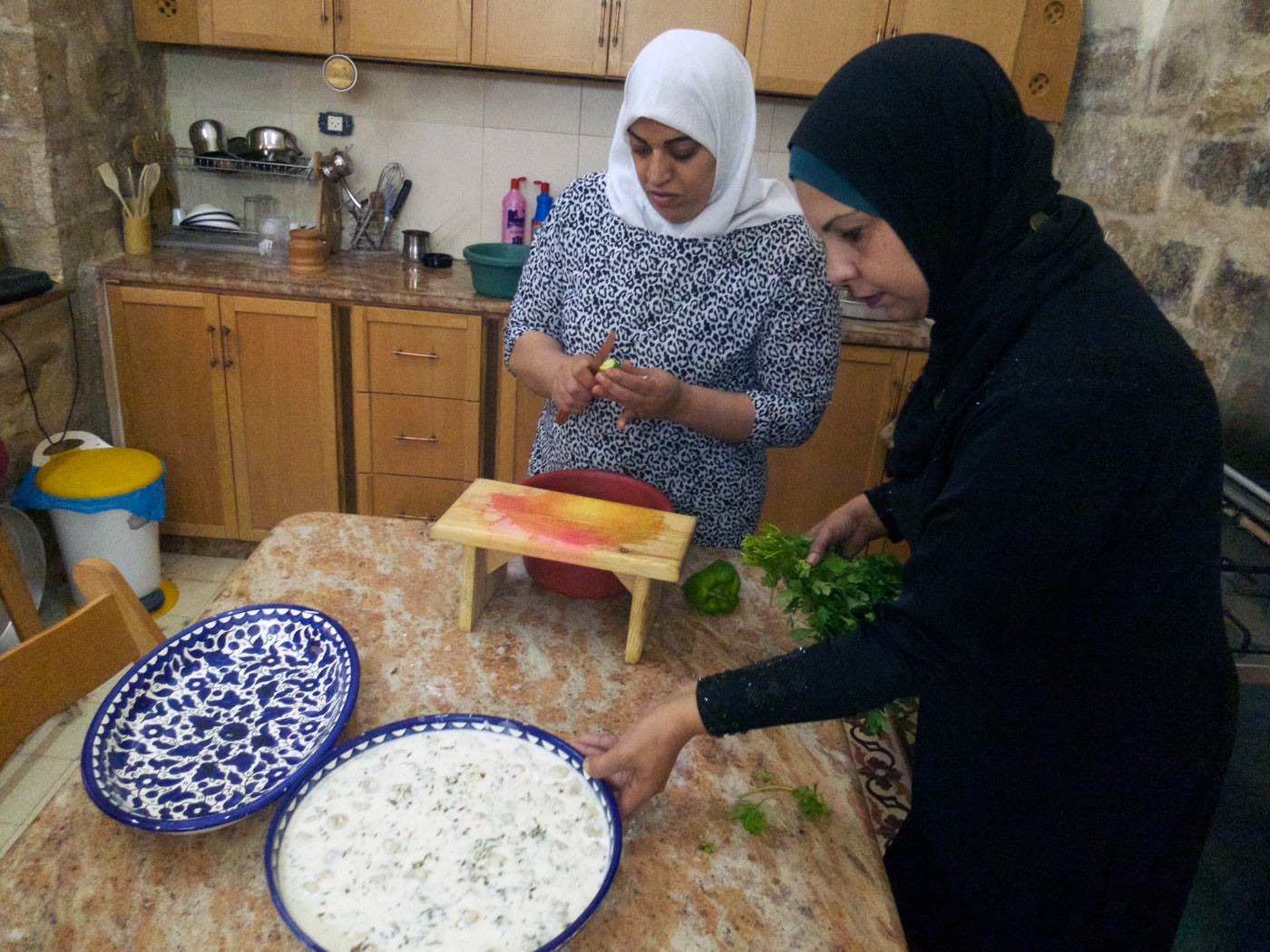
In this stop on their journey, Paul Salopek and his crew learn what the Bait al Karama is and what they do in this place.
Bait al Karama is the “House of Dignity” where women gather each month in a stone house to teach cooking classes. They are also writing a local cookbook. They are reviving their traditional Nablusi recipes, with all the original ingredients.
Salopek and his crew stop to help and learn about the culture while eating.
The next point that I explored on the virtual walk is BEIT HANINA, EAST JERUSALEM.
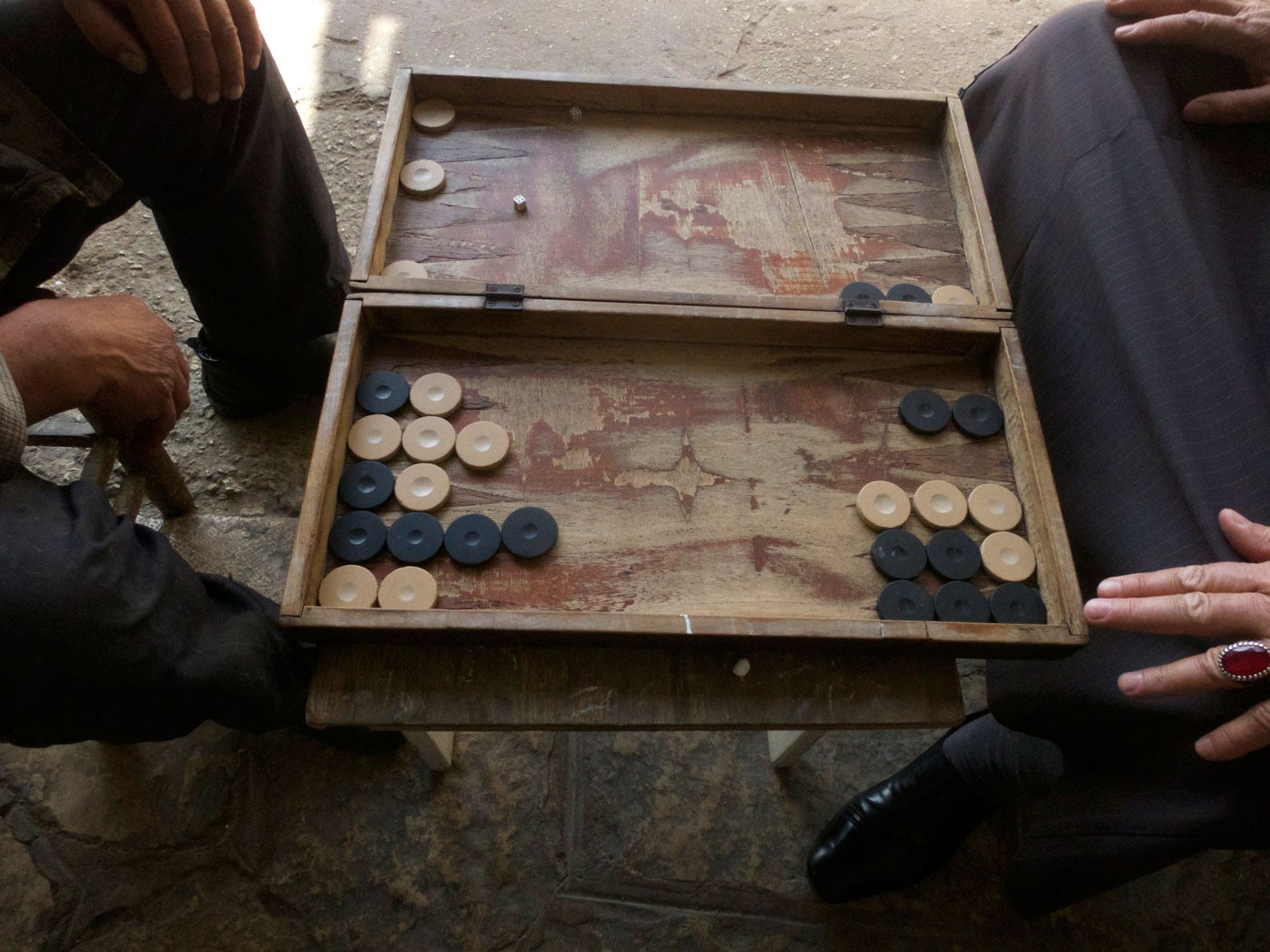
The tribal judge in this village explains to Salopek that he tries to be a mediator and solve problems for people within the community. He speaks on murders and how they work together to come up with fair and just repayment that people can agree to. I found it really interesting that people can choose not to accept this and often those people tend to retaliate with violence of their own.
‘“30,000 to 40,000 Jordanian dinars ($45,000 to $60,000)—that is a typical down payment, an advance. It varies with the sharia codes, of course. Has the victim been killed by a car? Has he been stabbed? The final amount varies with the nature of the crime. After a year, the two families must agree on the ultimate cost. 140,000 Jordanian dinars, total, is a normal amount. The killer’s family will try to get that number down, of course.”
And if the blood money is rejected?
“There are families who don’t accept it. They want revenge. It is rare. But it happens.” The judge holds up both palms in helplessness. “They will kill someone from the other side. We try to prevent this. We always ask for mercy. But if one side says no, that is their right.”’.
The last point that I explored on the virtual walk is NEAR AL QUWEIRAH, JORDAN.
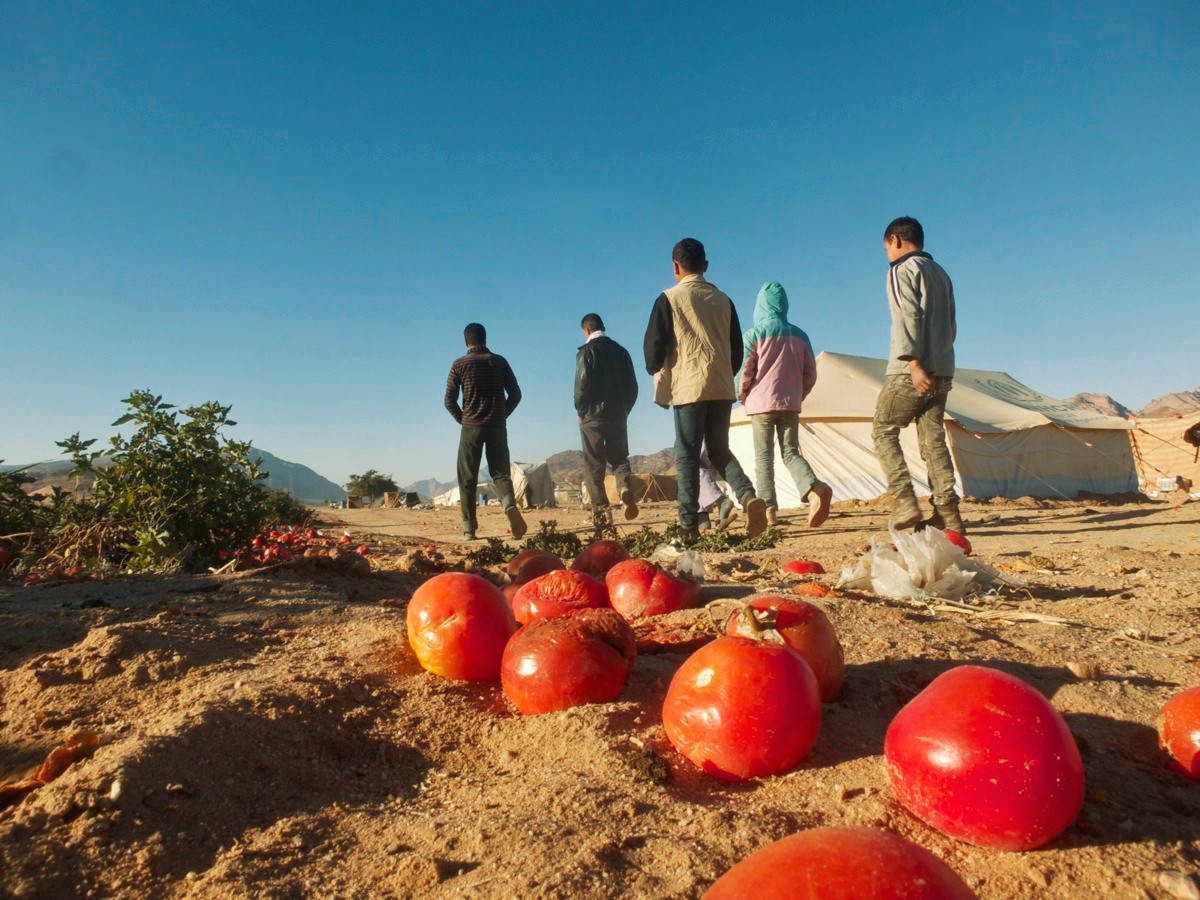
This visit gave Paul Salopek and his crew a new perspective. People in the village talked about their struggles with hunger. They don’t have meat cheese or often bread to eat. The farm for tomatoes to make money to buy food but they have very little.
“Wheat crops were torched. “We burned our family papers, our shoes, to survive the winter,” the man says. “There was no bread. We tried grass to try to stop our hunger.” Then one night he and his family—he sweeps an arm around the tent—grabbed their chance. They slipped through the siege lines and crossed into Jordan.”
Overall, I found this journey to be very interesting as you get to see Salopek meet so many different people and hear their stories and struggles from all around this voyage.
Thanks for reading!
-Carly Thompson
@CThomp2021
National Geographic: Out of Eden Walk
By: Dara Sborea
This week, we are exploring journalist Paul Salopek’s 24,000 mile journey, titled “Out of Eden Walk.” The idea was to follow the path out of Africa to other lands, just as our earliest ancestors did tens of thousands of years ago.
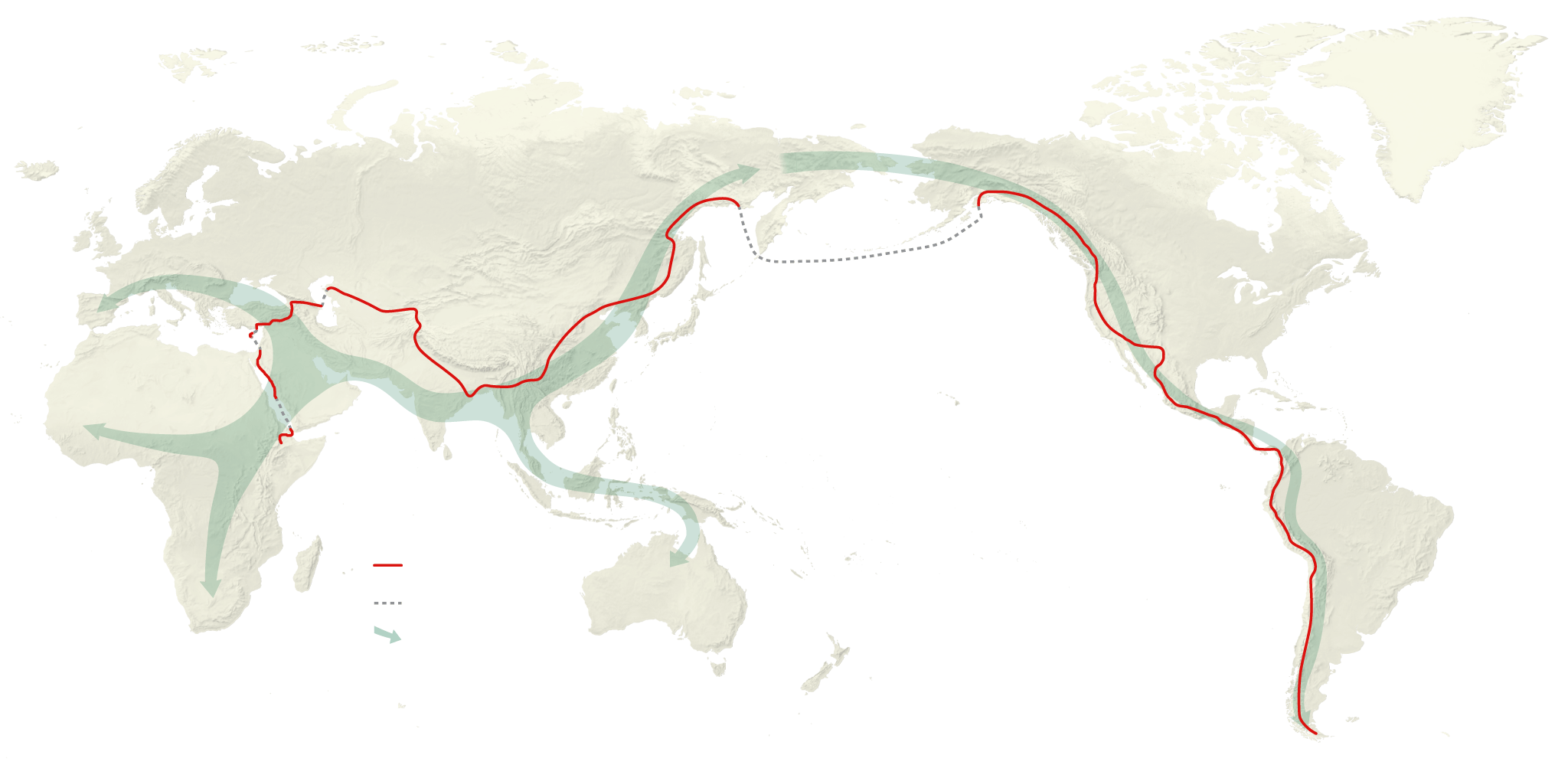
Salopek wanted to slow down so we can rediscover our world, on foot. His idea was to highlight the people and events along this journey that wouldn’t normally make the news. In this post, I will discuss three of destinations from the walk, but I highly suggest you take a look at Salopek’s journey for yourself.
Salopek begins where humankind began, in Africa. In the Great Rift Valley, which Salopek describes as an inhabited wilderness, he encounters Ahmed Alema Hessan, a leader of a clan of the Afar people. Hessan hasn’t driven camels in 30 years, but in this region, there is plenty of help as Salopek and Hessan walk and talk. Salopek describes the people who come and go along this part of the route as engaging in a public conversation, just to vanish into the horizon once their part is done.
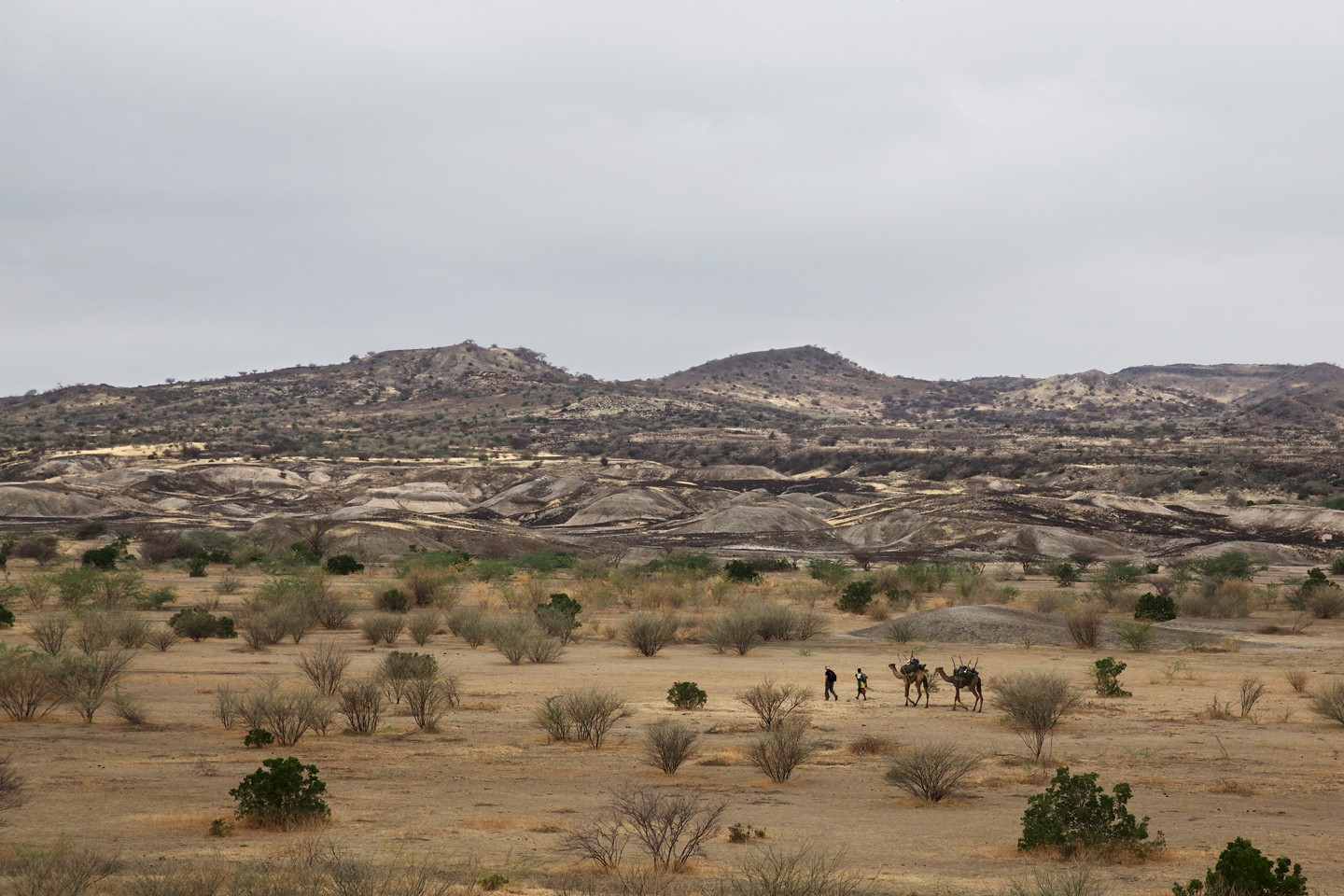
For a significant part of Salopek’s journey, he travels along the Silk Road, which was a network of trade routes that connected China and the Far East with the Middle East and Europe.
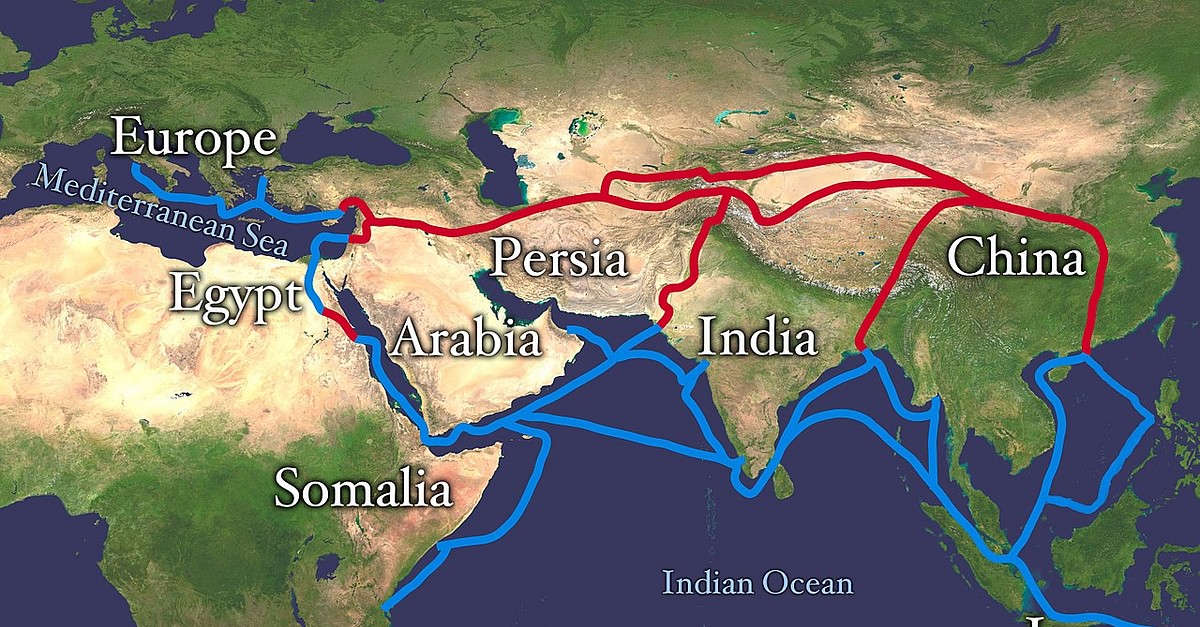
Horses were first domesticated in Kazakhstan, which means the first cowboys were there too. Salopek decides to look for a horse here to use as a pack animal. He is committed to completing his journey on foot, or by boat when required. As it turns out, while Kazakhstan’s citizens cling to their heritage with horses, few have seen or touched a live horse. Salopek does manage to find a horse breeder, and a horse is eventually delivered to him, but it’s likely not the one Salopek chose.
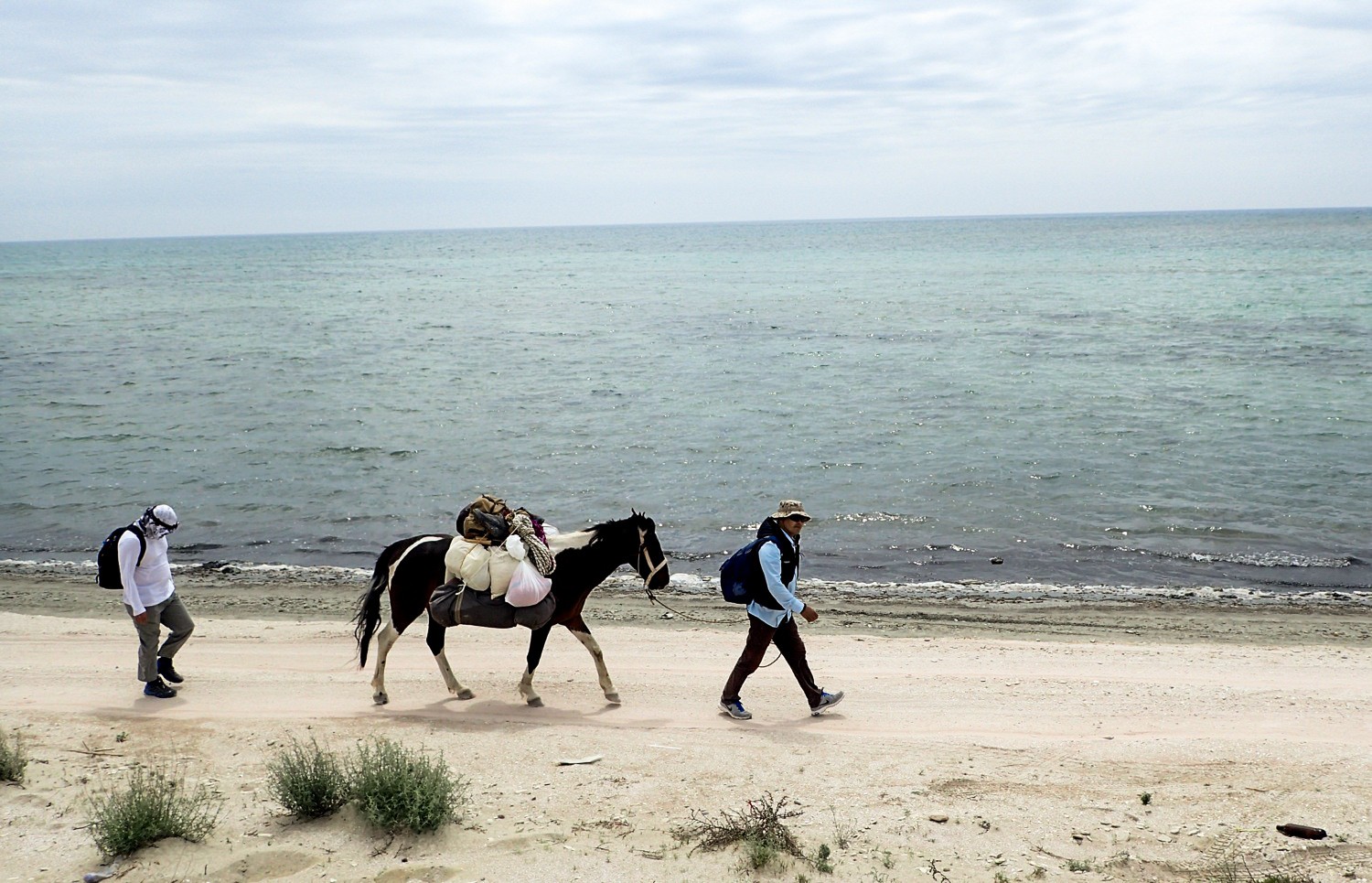
Unfortunately, Salopek’s trek was sidelined for a significant amount of time because of the Covid-19 pandemic. He has, however, resumed his journey and as of earlier this month (November 2021), he was in China’s biodiversity hotspot situated in the Gaoligong Mountains, near China’s border with Burma. To give you an idea of the massive biodiversity of the area, there are about 5,000 species of plants, 700 species of animals, and 1690 different insects! Several new plant species are discovered in the area each year. Salopek reminds us that while we were all focused on the climate change summit in Glasgow, the United Nations 15th biodiversity conference was held in China this year, and it was equally as important as the climate change summit.
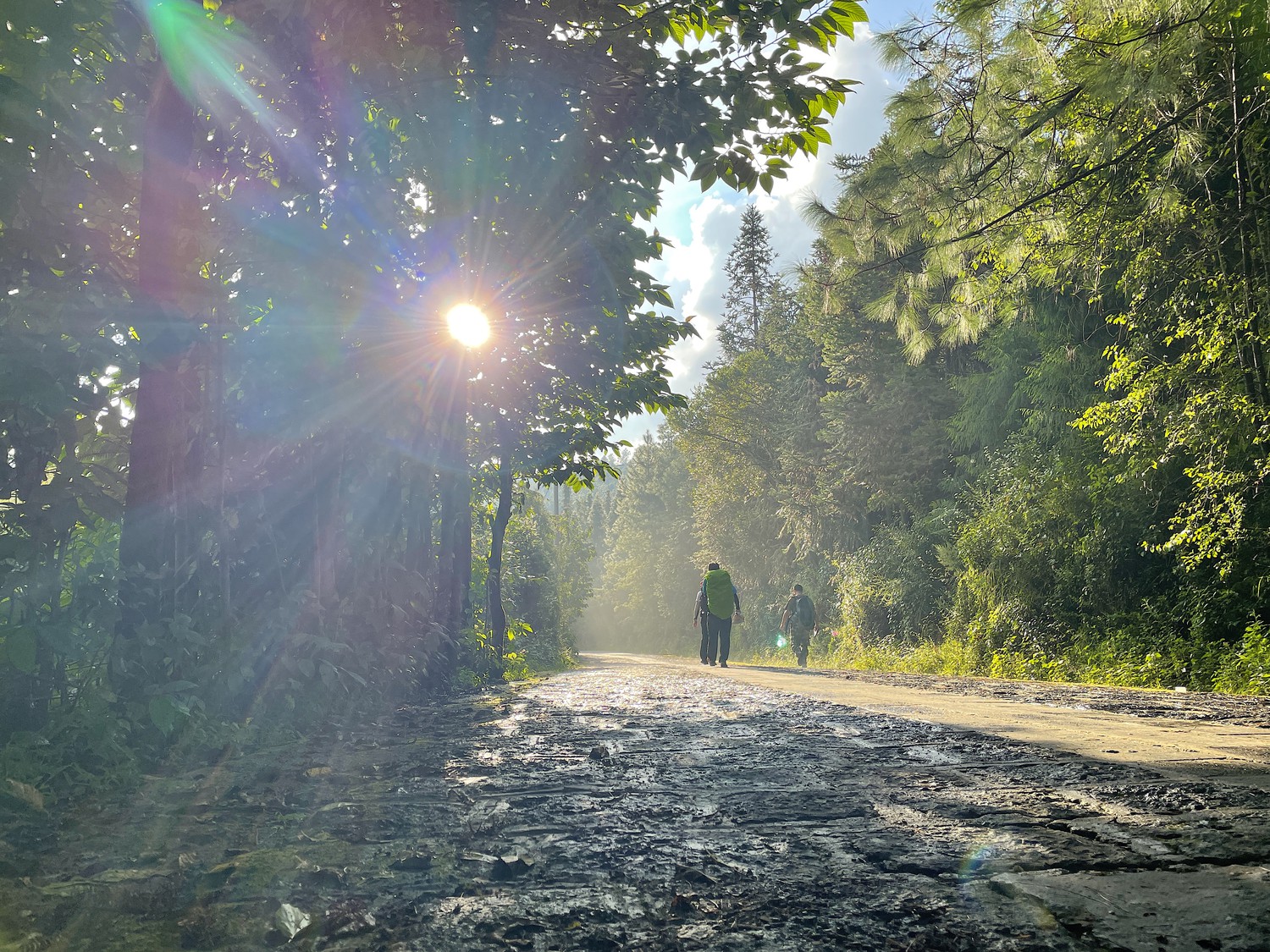
The Out of Eden Odyssey

Paul Salopek, a journalist though National Geographic, orchestrated a 24,000 mile journey of journalism. This journey, called Out of Eden, was a ten year long experience where Salopek traveled from Africa on the path of the migration of human life.
In this blog, I will be choosing three magnificent places throughout Salopek’s journey that really caught my attention- the first place being Israel, specifically Jerusalem. Jerusalem holds so much historical beauty, especially in the realm of religion. On this virtual journey, every viewer has the opportunity to take a “walking tour” of Paul Salopek’s pathway through Jerusalem and see his adventure.

The next place on Paul Salopek’s journey that caught my attention was Jordan. Jordan, like Israel, holds historical and religious significance. The specific area within Jordan that held my interest was Gohr Al Safi. This location is featured in the article Shards. Gohr Al Safi is home to the ruins of the Christian Monastery that belonged to Lot, a righteous man of God. This monastery is located at the lowest point of the world: 1,378 feet below sea level. The article shares that there are many mosaic restorers that spend their days trying to piece back together the monastery. This is amazing because it shows that there are people that deeply care about the historical and religious significance of this place and that they hold it in high esteem.

Faridcot, Punjab, India was my third place of interest. The article, Walking Through a Youthful Exodus in India, brings up a very intense issue in rural India- the need for escapism. To my surprise, Salopek shares that most drug abuse in India is in rural communities and that 70 percent of drug abusers come from rural backgrounds. That is certainly not the case in America, as the opioid epidemic is rampant within urban areas and less prominent (but still very existent) in rural communities. Drug abuse is not the only form of escapism that plagues the people of Punjab, the dire yearning to literally escape and leave their country is a relevant form of escapism as well. Tens of students every day would approach Salopek to practice their English skills. This English skills need to be proficient in order for these students to gain visa access and emigrate. This article was very interesting, but it is always disheartening to hear of devastating living conditions and what people in those areas need to do/ feel the need to do in order to escape and be free.

This Out of Eden experience was very informative and incredible. It is always important to be aware of the things that are going on around the world, for these nations, though they are far, are homes to our brothers and sisters. The Out of Eden walk speaks light into culture, social issues, history, and so much more. Check it out for yourself, it is worth it.
Diane Hoffman
Blog Post 5: Communicators
by Cristell Ramirez
When reading chapter 2 of Sail the & C’s, I learned about a lot of different tools and the importance of communication. Communication is key to everything in my opinion. Especially as educators, being able to communicate is one of the most important aspects of teaching. Being able to communicate with your students is important along with them being able to communicate with us. There sometimes can be language barriers and we need to learn/teach our students to communicate us. Personally I feel like every student should have the access to this tool and or any translator tool. I understand what it feels like to have a language barrier and not understand what is going on because of it so having this is essential to me.
Microsoft translator is a tool in which you can have live captioning and translation in the classroom. Schools are becoming more and more diverse. There can be students who don’t speak English and their families can’t speak it either. Being able to communicate with the family of your students is also essential since you want the family of the student to be in the known of what they are learning in school. Not just there being a language barrier that this tool can be used for, it can also be used with students who are hard of hearing. Since it has a live captioning option, it can be used for the student to read the lesson and still get all the information.
Microsoft translator can be used for many different situations. As you can see you can use the live translator. If you are having a conversation with someone who speaks another language you can translate in the moment and it even speaks for you. In an education setting, you can use this with students or with the family of them to translate in real time or even give you captions. It can be used for presentations/lectures and it can be used during work groups. Here’s a little video on how to use translator in school.
Information from: https://www.microsoft.com/en-us/translator/education/
Check out my twitter! @ CristellR2001
National Geographic Out of Eden Walk
Tiffany Imparato
This week I had the pleasure to explore a very exciting project conducted by National Geographic. The project termed the Out of Eden Walk is a truly amazing journey by Paul Salopek that follows the journey of those whom migrated from Africa back in the stone age. He follows the very journey of migration that happened so long ago and inspires his viewers through his adventure. Along the journey he includes photos, stories, audio, and videos that document everything along the long way. He documents the landscape of his monumental journey along with those that he encounters and the stories they have to tell as well. Through telling their stories he gives a voice to the silent on a global level. Paul traveled around 24,000 miles and it took close to a decade I must admit I don’t think I would survive past the first month but thankfully I can experience it without leaving my home.

The entire journey of the project is very welly documented and users have free access to an interactive recount of the experience. As a future educator I think that this would be an amazing tool to use in my future classroom. The journey covers history, geography, encourages global citizenship, and teaches students about various cultures. Each interactive section of the voyage includes an array of information, photos, videos, and real-life encounters. The trip was so welly documented it gives the viewer a truly immersive experience that makes you believe you are walking right there with Paul. I think that this type of interactive tool could really get students excited to explore the walk and that they will find themselves lost in the exploration as well. I have decided to cover three sections of the voyage to explore and help you understand how remarkable this entire project is.
The first section I choose was Paul’s journey out of Africa where it all began in January of 2013.
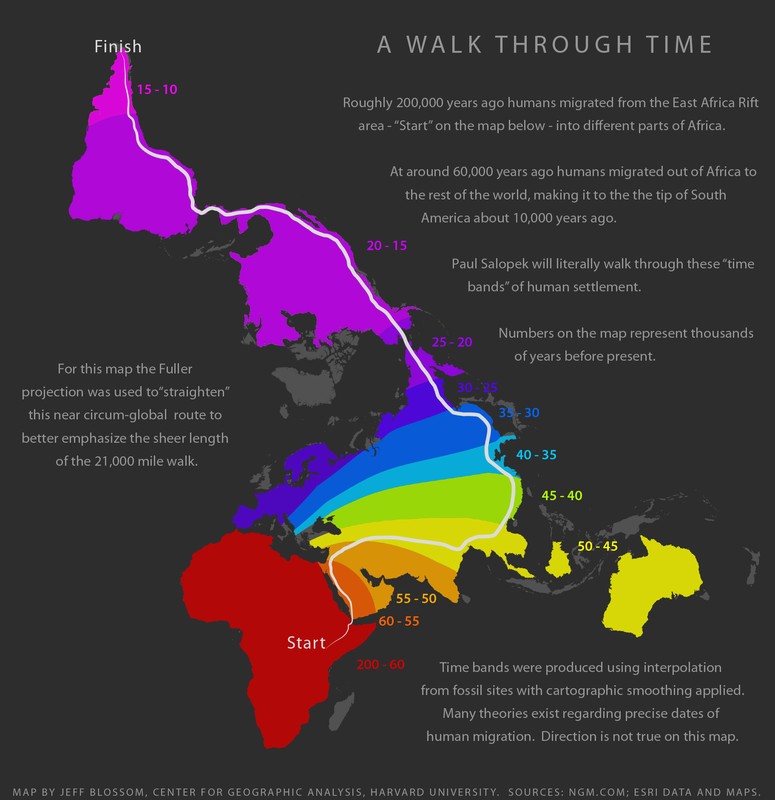
Paul began his journey in Ethiopia which I am a bit jealous of because I have always wanted to explore the culture and countryside there. Ethiopia is a land that is deeply embedded within their culture. On January 21, 2013 he set out on this amazing migration journey in Herto Bouri, Ethiopia along with his guide Alema Hessan.
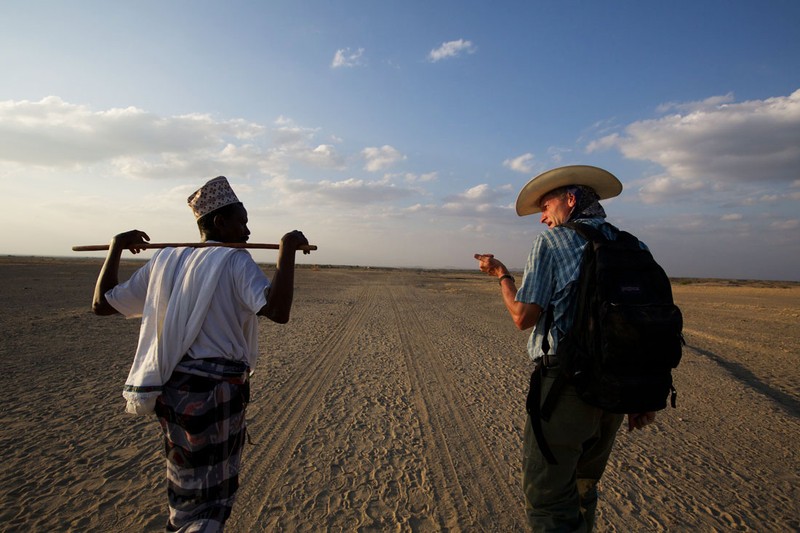
In the beginning of their trek, they lead a caravan of camels toward the Indian Ocean following their nomad voyages that walked before them. The aera that they are walking has some of the world’s oldest fossils from humans just below their feet. I would imagine it must be a humbling experience to walk the same route of so many. During their way through this vast countryside, they walk through the Rift Valley which is compared to a natural highway. With water being scarce they come across hand dug wells that provide a much-needed source for them.
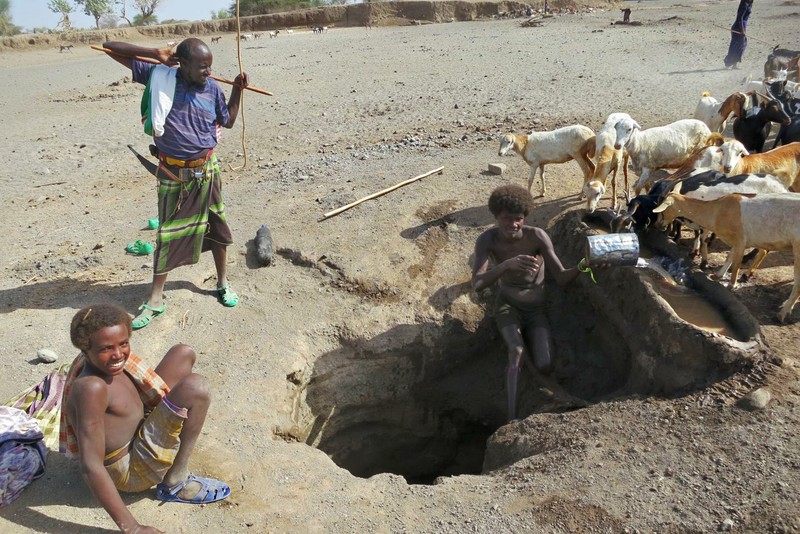
This is a humbling moment because sitting here in my comfortable house water is something I take for granted every day. The people that live and travel through this desert area rely heavily on the use of these hand dung wells.
The first aera I decided to explore Afar Badlands, Ethiopia
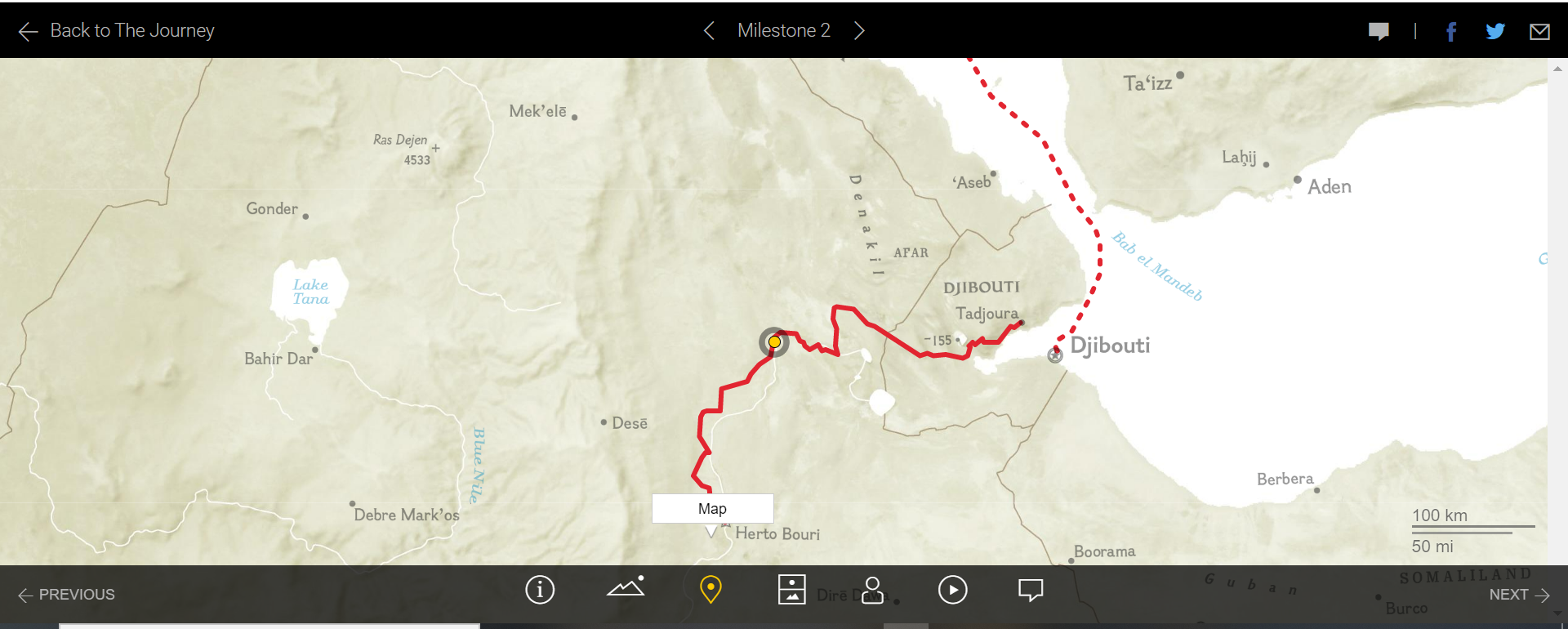
By day 19 they have reached a huge milestone of traveling 100 miles and enter into the Afar Badlands; I cannot imagine walking 100 miles. One very neat function of the tool is the Earth & Sky tool that allows you to view two images at the milestone destination. This would be exciting for students to get a real feel of what would be surrounding them if they were standing in that very spot. The contrast of the rough terrain below his feet and the rich blue sky above it magical.
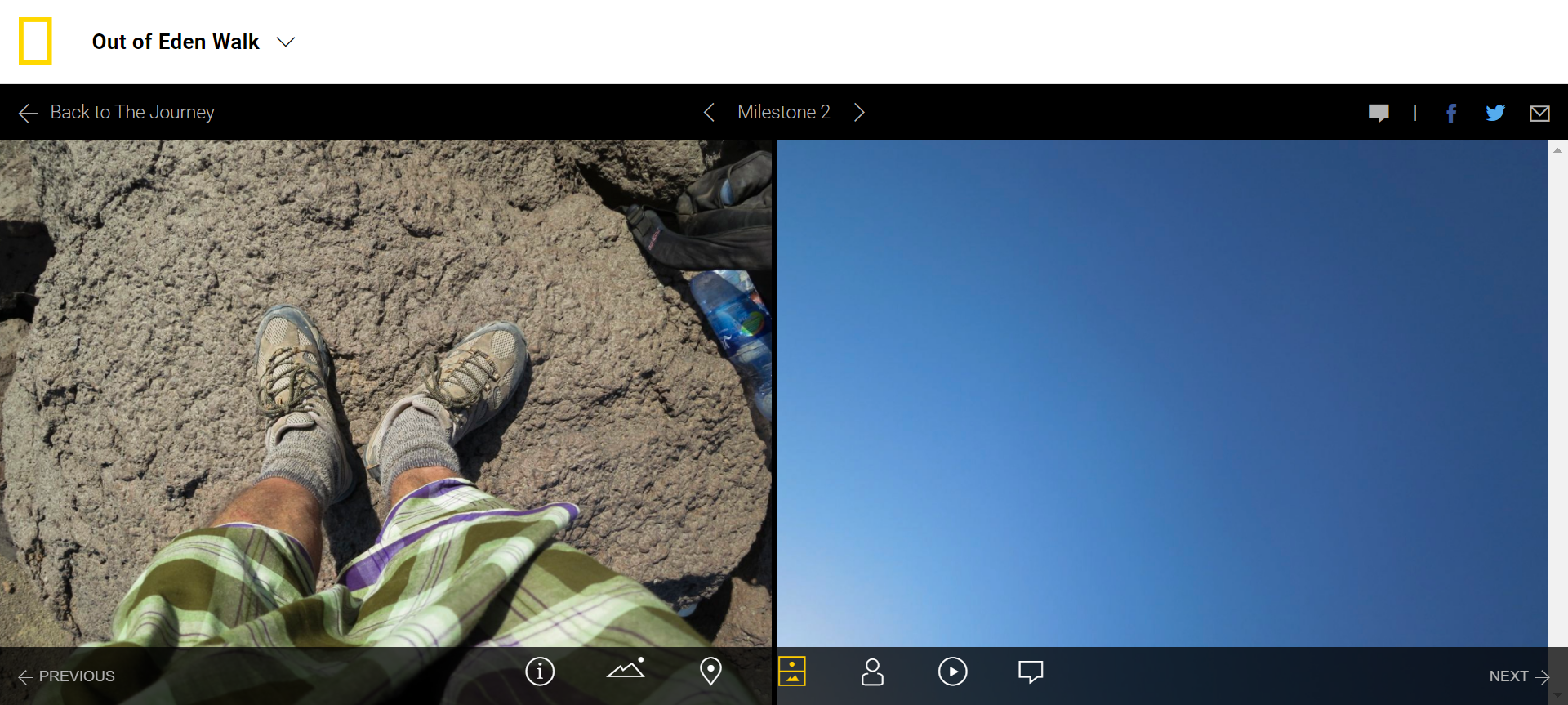
Another great feature of this tool is what they call glances that are videos that help you feel as though you are part of the journey. In this video we see the camels on their path right alongside a highway. For me this was also as the past meets the current society. The camels are a vital measure for this epic journey as they are carrying what the group needs for survival including food, water, and medical supplies.
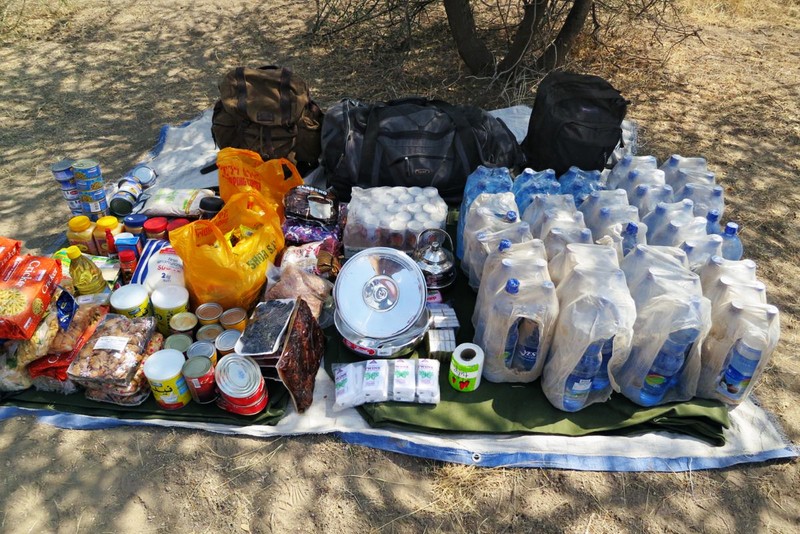
Seeing the means of travel via walking/ camel caravan is a good representation to make students apricate what great lengths the original people took. It is a great way to get students to think about life outside of what they know and help guide them to global citizenship. I think it could be helpful to challenge students to think about how people used to travel and how people live in regions that are far less industrialized. I think it could be helpful to open students minds and encourage them to empathize with those that have less available resources to them.
The second aera I selected to explore is Mile Stone 11: Near Dahaban, Saudi Arabia.

At this point the travelers have journeyed 1,000 miles and 136 days and it is now August. They have encountered many more obstructions such as farms, fenced aeras, factories, and subdivisions; obviously during the original route these did not exist. The desert sun has been unrelenting and I can’t even imagine how they were able to quest on under such conditions. The teacher in me thinks that this would be a great example to have students research the weather conditions in this region. In this milestone glances we see the camels and the group trying to take shelter from the heat of the desert under an over pass as travelers speed by on the adjacent highway. This just reemphasizes the harsh conditions of the region and the toll it is taking on those making this journey.
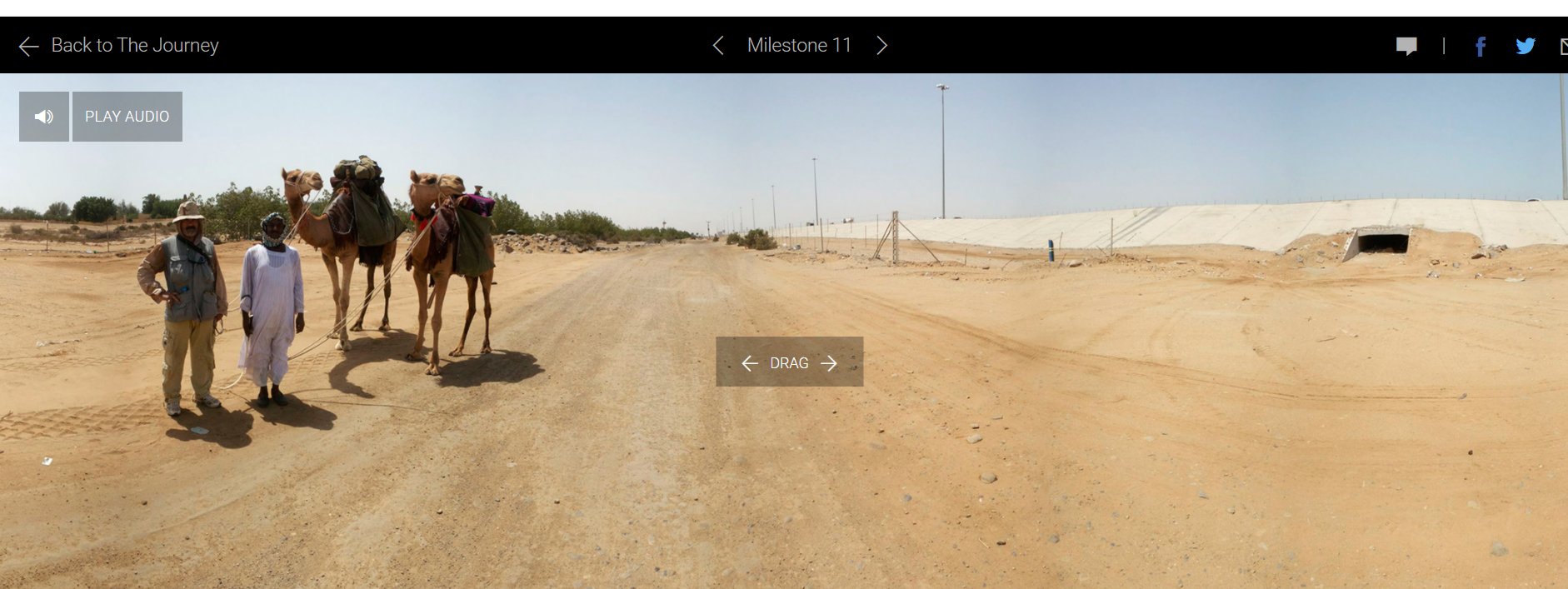
In this location there were no encounters as unsuspecting people sped by on the highway unaware of the monumental journey taking place just feet away from them.
Milestone 63 Near Varanasi, Uttar Pradesh, India
This is now day 2160 and they have traveled 6200 miles and are in a world far different than their beginnings. The glances section depicts a calm river with the sounds that surround them such as children. In the encounters we meet Phoolwanti Samayamu who is guiding her cows to drinking water.
Her story of the struggles that she endures living in the region under poverty touches me greatly. It seems as though the reduction in rain has greatly affected her lively hood causes much distress upon her family.
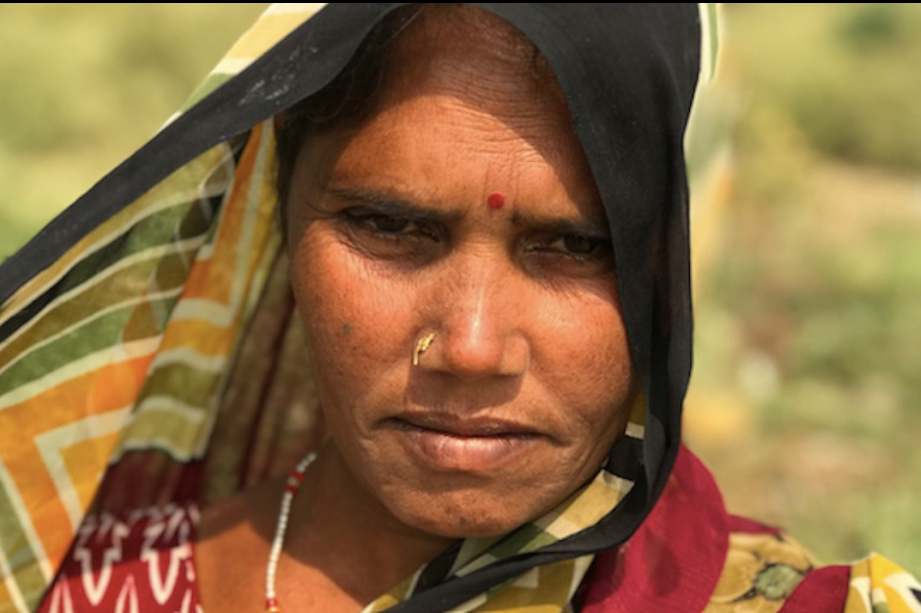
This would be a great to get students involved in exploring changing weather patterns and how global warming can greatly impact not only the landscape but people’s lives as well. The great droughts in India have impacted so many in everyday life and I think we need to encourage students to learn more about sustainable goals for their future. Water is often the key to sustaining life and is a vital point of many industries without water we would struggle.
Throughout the journey it is clear that Paul and the group has meet many different people across many different landscapes. I only explored a very small section of his great mission and can only begin to imagine what he has learned along the way. He has traveled through many different regions and cultures seeing many different struggles and successes. He has seen firsthand how society varies from location to location and explored populated regions that have modern technologies and remote villages that are barely surviving. I am thankful to experience this and can see how vital this could be in future lesson plans to challenge my students to think outside of New Jersey and their comforts.
Educational Blog Post 2: Collaboration
by Cristell Ramirez
In today’s education system, collaboration is an important part of it. Teachers and professors collaborate all throughout the day and there are changes being made constantly. Back in the day, teachers would be making their lesson plans by hand and then it went to making their lesson plans on the computer and printing them out. Worksheets for students were being printed out daily and now worksheets are being added into Google Classroom for kids to do right from the computer/tablet. Every single day teachers do work together to figure out this time we live in and they collaborate in order to keep up with this technology and make sure everything is up to date.

Teachers can always share what they are using or doing in their classrooms, whether it be at their work place or even online. Since there are new tools or new worksheets being found out every single day teachers need to communicate with one another. When a teacher is involved with the student’s academic life, the student can achieve more things academically. When a student is engaged in the lesson being taught they learn more because they feel like they are understanding more and they are having fun with what they are attempting to learn. So when a teacher finds a good method of teaching its great that they spread it and let other teachers know so they can use it also. The education system works wonderful when there is collaboration between everyone.
What I explored on my Out of Eden Walk
According to the National Geographic, Out of Eden Walk is a 24,000-mile odyssey, decade-long experiment conducted by Paul Salopek. We as readers learn that, “[He] is walking the pathways of the first humans who migrated out of Africa in the Stone Age and made the Earth… [and] is covering the major stories of our time—from climate change to technological innovation, from mass migration to cultural survival” Click HERE to find out more. Paul documents and uploads photographs, videos, audio, etc. and records,” human life at the start of a new millennium as told by villagers, nomads, traders, farmers, soldiers, and artists who rarely make the news.” Click HERE to read more.
I explored the “Children’s Crusade” article focused on the Shilo Settlement in West Bank. In this article, we learn about Paul’s encounter with an Israeli settler named Marc Prowisor who takes him to a Palestinian farmer named Khaled Daraghmeh. Below are two images of the men.


The article states that the “American-born Jew, Prowisor is the security director for the One Israel Fund, an organization that provides logistical assistance to Israeli settlements occupying the West Bank. I have paused the walk at Shilo because I wished to visit these controversial outposts, to meet an Israeli settler. Prowisor’s community, and others, is trying to evict Daraghmeh from the land he farms, claiming he is a squatter. Daraghmeh says the hay-colored fields have been in his family for a century. This dispute is years old. The two men are categorical enemies”. (Salopek, National Geographic Society, 2014)
As reader we learn that there is a lot of conflict more than ever before between the Israeli and Palestinian youth.
I explored the Jeddah, Saudi Arabia walk, a total distance of 63 miles (101 KM). Click HERE to find out more.
During the walk they stubble upon a gardener:


Image by: PAUL SALOPEK

Click HERE to read more.
I also explored Tbilisi, Georgia in the Walking Tbilisi article. It is said that Tbilisi has kaleidoscope history of invasion and reconquest.

They are having a meal in Jerusalem. I found this image interesting because of the star of David and the Jewish words.
Here is an image of the inside of the Sioni Church

“The cross of St. Nino is locked behind glass. Her cross is made of two grapevines, lashed with her own hair”
Click HERE to view more images of Tbilisi, Georgia.
Thanks for reading! Good Luck to Paul Salopek on this journey! His global walk resumes in Yunnan, China after being halted by the global pandemic. Click HERE to read about where he is walking now.
HyperDocs: A new hands on approach to learning

What is Hyperdocs?
Hyperdocs are fun and engaging digital lesson plans designed to provide students with all their content and tools for learning in one organized space. Hyperdocs allows students to access content before receiving direct instruction. Students can then apply their learning using the 4 C’s: critical thinking, communication, collaboration, and creativity.
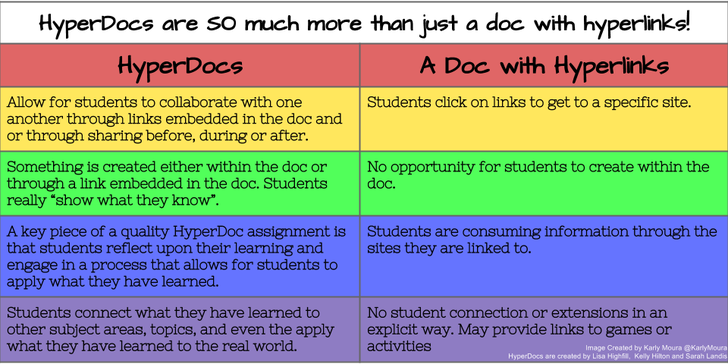
Why Hyperdocs?
Hyperdocs have replaced traditional boring ways of teaching. Learners are now more engaged in fun interactive hands on learning. Here is a video to help explain why you would want to use Hyperdocs.
When creating a Hyperdoc, make sure to follow this basic template. Many HyperDocs follow this basic template that takes students through six steps of a lesson:
- Engage: Hook your students, get them engaged, and activate prior knowledge. You might use a fun video, interactive website, or audio recording.
- Explore: Link resources, such as videos or articles, for students to explore more information.
- Explain: Clarify the learning objective for your students. This is where you could teach a whole group lesson with direct instruction, or add additional resources for students to explore.
- Apply: What do you want students to create to demonstrate their learning? Give instructions for the assignment.
- Share: Provide a way for students to share their work and receive feedback.
- Reflect: Pause for reflection (whole class, think-pair-share, etc.) or link them to a digital way to share their thoughts.
- Extend: This portion is great for early finishers. Provide extra activities, additional online resources, or challenge them with an extension assignment to extend their thinking.

There are many different sites available online that offer free templates and ideas to help you get started with creating your own Hyperdocs.
In my own exploration of Hyperdocs, I found one about Pokemon Go which I feel would be super fun and engaging for kids in upper elementary age level through middle school. Being a Pokemon fanatic myself I really enjoyed this hyperdoc. I’ve enclosed a copy of the link so you can check it out for yourself.
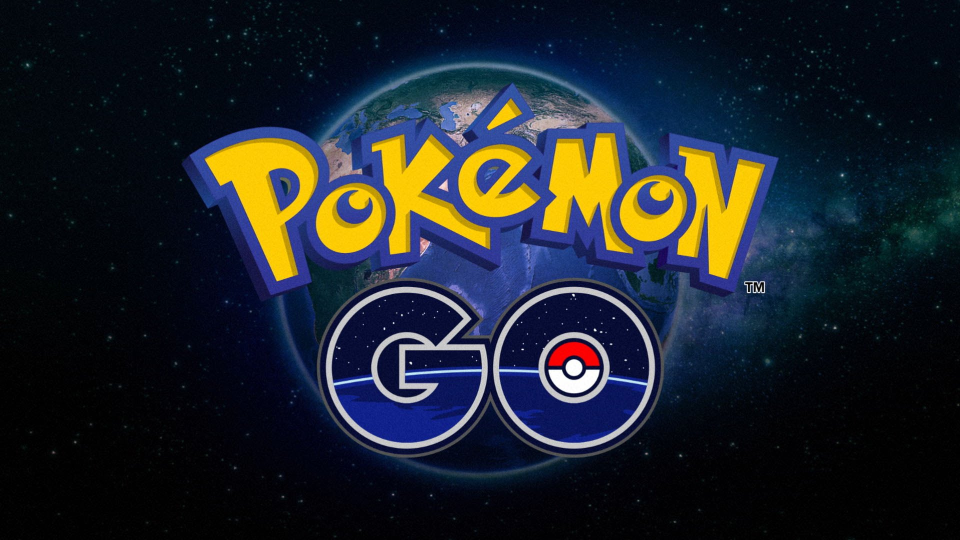
I hope you enjoyed this weeks blogpost.
Bayta O.
Blog Post 10
Out of Eden Walk!
The first destination I chose from the walk is the Holy Lands! The Holy Lands consisted of Saudi Arabia, Jordan, West Bank, and Israel. The Holy Lands seeded the three great monotheistic faiths. On April 28 2013, there was a border crossing of Saudi Arabia. It consisted of a converted car carrier hauling sheep and camels.

The second destination I chose from the walk is Silk Road! On December 24, 2015, there was the border crossing on Kazakhstan. The Caspian Shore gave way to the wind-raked expanse of western Kazakhstan’s steppes. They crossed at night and the crossing consisted of 3200 miles. This crossing was a significant one and was a milestone.
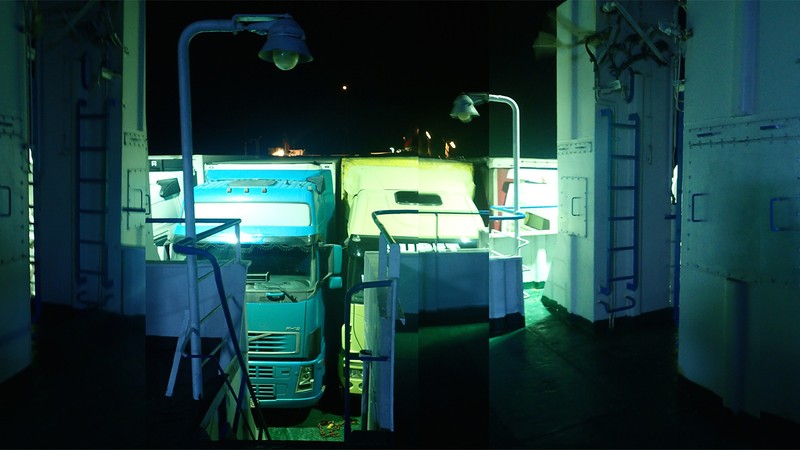
The third and final destination I chose from the walk is the Riverlands! This consisted of Pakistan and India. It lasted from February 2018-October 2021. The walk traversed an emerging center of global power by navigating through a maze of waterways across fertile South Asia. The Out of Eden’s Walk’s global trail eventually meandered down to the river-fed plains of South Asia.
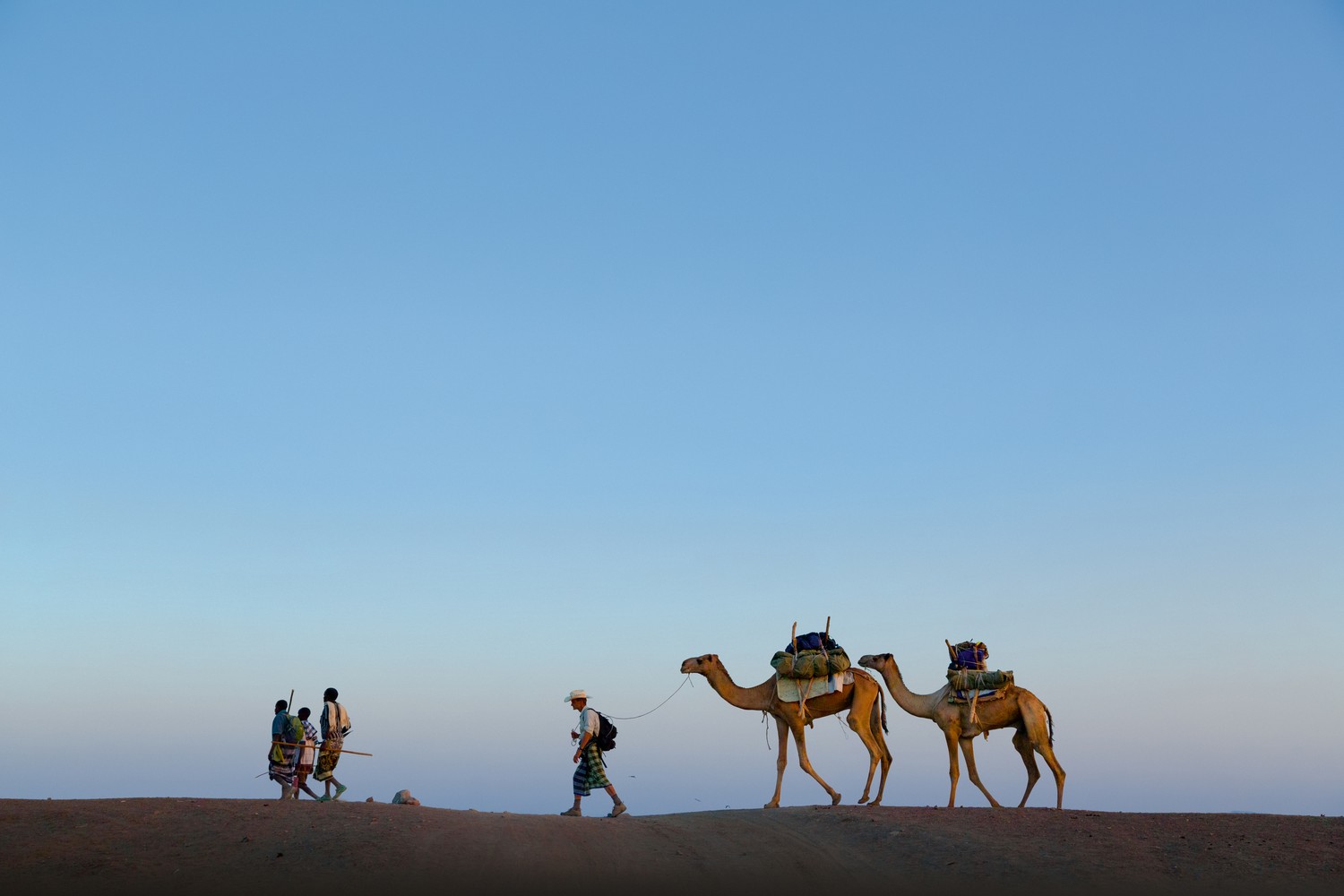
You can explore the Out of Eden Walk like I did here!
I hope you enjoyed! Thanks for viewing 🙂
Recent Comments